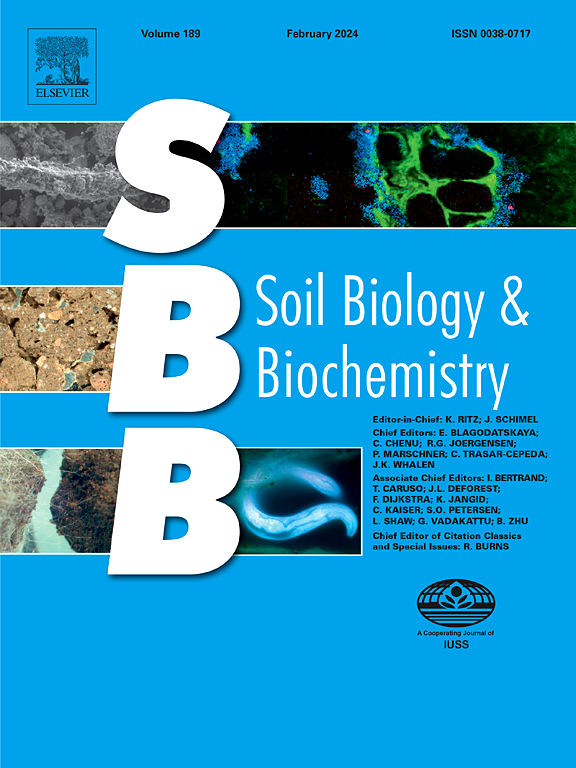Soil nematode community profiling using reference-free mito-metagenomics
IF 9.8
1区 农林科学
Q1 SOIL SCIENCE
引用次数: 0
Abstract
Nematodes are ubiquitous and diverse components of soil ecosystems worldwide. The 18S-based metabarcoding is known to have low species-level resolution and introduce bias in PCR. The mito-metagenomics (MMG) approach involves directly sequencing pooled samples, yields numerous mitochondrial reads that can be assembled into full or partial mitogenomes. This method circumvents the challenges associated with PCR-based metabarcoding and hold significant promise in biodiversity and phylogeny study. However, a reference database is typically required to extract mito-reads/contigs and provide taxonomic or phylogenetic context, thereby limiting its applicability. In this study, we introduced a novel reference-free pipeline for MMG assembly and diversity estimation. This pipeline has been integrated into a snakemake workflow, enabling the generation of output that is readily useable for phylogeny reconstruction in a single run. The performance tests have indicated that this new approach surpasses reference-based methods in soil nematode community profiling. We demonstrated that assembly quality improves with increasing sequencing depth, recommending an average of 1–2 Gb per species to achieve acceptable MMG assembly. Our pipeline presents an opportunity to create high-resolution phylogenies and assess diversity for poorly understood taxa, including neglected microscopic eukaryotes.
利用无参照线粒体基因组学分析土壤线虫群落概况
线虫是全球土壤生态系统中无处不在的多种多样的组成部分。众所周知,基于 18S 的代谢编码的物种级分辨率较低,并且会在 PCR 中产生偏差。线粒体-基因组学(MMG)方法包括直接对集合样本进行测序,产生大量线粒体读数,并可将其组装成完整或部分有丝分裂基因组。这种方法规避了与基于 PCR 的代谢编码相关的挑战,在生物多样性和系统发育研究中大有可为。然而,提取有丝分裂读数/序列片段和提供分类学或系统发育背景通常需要参考数据库,从而限制了其适用性。在这项研究中,我们引入了一种新型的无参考文献管道,用于 MMG 组装和多样性估计。该流程已集成到 snakemake 工作流程中,只需一次运行即可生成可用于系统发育重建的输出结果。性能测试表明,在土壤线虫群落剖析中,这种新方法超越了基于参考的方法。我们证明,随着测序深度的增加,组装质量也会提高,建议每个物种平均使用 1-2 Gb 的数据来实现可接受的 MMG 组装。我们的方法为建立高分辨率的系统进化和评估了解不多的类群(包括被忽视的微小真核生物)的多样性提供了机会。
本文章由计算机程序翻译,如有差异,请以英文原文为准。
求助全文
约1分钟内获得全文
求助全文
来源期刊

Soil Biology & Biochemistry
农林科学-土壤科学
CiteScore
16.90
自引率
9.30%
发文量
312
审稿时长
49 days
期刊介绍:
Soil Biology & Biochemistry publishes original research articles of international significance focusing on biological processes in soil and their applications to soil and environmental quality. Major topics include the ecology and biochemical processes of soil organisms, their effects on the environment, and interactions with plants. The journal also welcomes state-of-the-art reviews and discussions on contemporary research in soil biology and biochemistry.
 求助内容:
求助内容: 应助结果提醒方式:
应助结果提醒方式:


